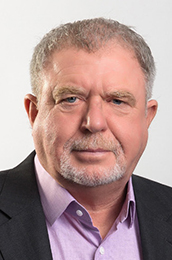
Interview with Mark Wafer, President Megleen, Tim Hortons, Toronto
Tim Hortons, Toronto bh IN BRIEFTim Hortons franchises across Canada are now cutting edge, high tech operations within one of the largest restaurant chains in the North American quick service sector. They employ a diverse workforce that, as Mark Wafer’s franchises illustrate, includes people with all types of disabilities.
Canadian Business SenseAbility is a national, not-for-profit organization run by business for business. Our goal is to help companies accelerate success through the talents of people with disabilities. In Canada, only a relatively small minority of people with disabilities are employed. Today in Canada there are 450,000 recent grads from the past five years who have never worked a single day. Of those, 270,000 have a postsecondary education. None of those potential employees are counted in unemployment numbers therefore we believe the real unemployment rate is about 70%. “Unemployed … the disabled live in perpetual depression.” | Mark Wafer is a Tim Hortons franchised owner wth six locations in Toronto. He is an inclusive employer and has hired more than 130 people with disabilities over the past 21 years. His business success led to a new career as a public speaker. Born deaf, Mark is a leading voice for inclusion. He was inducted into the Canadian Disability Hall of Fame in 2014, and in 2016, he received the prestigious David C. Onley Award for Leadership in Accessibility. My wife Valarie and I opened our first Tim Hortons location in 1995 and hired a young man, Clint, who has Down Syndrome to look after the busy dining room. Although I was unsure how this would work out I certainly understood the barriers Clint would face from other employers who were fearful of hiring workers with disabilities. To my great surprise, Clint became my best employee. As my business grew, I hired more people with cognitive disabilities in entry level positions and I quickly began to see a pattern. These employees worked harder than the others, stayed longer, required no supervision, worked in a safer manner, and boosted morale throughout the workforce. I also saw a clear economic case for inclusion. Since we had so much success with employees who had intellectual disabilities, we decided to open our doors to workers with all types of disabilities. The results have been extraordinary. We have hired more than 130 workers with disabilities; today, 46 of our employees have a disability. 2. Did you have support? 3. What are the major advantages?
4. How has inclusion changed your career? As a result of our business success I began speaking publicly so that other owners could also benefit from what is a massive, untapped labour pool. Our success also led to policy changes at both levels of government. Audiences bought into my economic case quite quickly because the message was peer to peer. I had no vested interest in telling them they should hire from Canada's largest minority group – people with disabilities are 15% of the Canadian population or, framed differently, equal to the entire population of Manitoba, Saskatchewan and Alberta as a percentage of the population of Canada. Statistics say the unemployment rate for people with disabilities is 50% but anecdotally, we believe the real rate is about 70%. During the Great Depression the highest the unemployment rate was 24%; yet today at 70%, the disabled live in a perpetual depression. Show leadership from the top. The tone and intent of a company is set by the CEO. Learn more about the advantages of hiring people with disabilities through supportive employment organizations or local service clubs. For example, I co-founded Canadian Business SenseAbility, an association designed to help corporations become disability confident. I also helped start a program called Rotary at Work to encourage Rotarians to create employment opportunities for individuals with disabilities. Understand that the case for inclusion is clear, not just for economic reasons, but because of the personal and social benefits that follow. Become a champion for inclusion.bh |

 Mark Wafer, President Megleen,
Mark Wafer, President Megleen,
